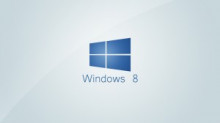Microsoft’s new Operating System, Windows 8 meant for ARM tablets focus on applications capable of challenging Apple’s iPad. Among the details provided by Microsoft about the OS, two of them should give the rivals a little pause.
First, WOA (Windows ON ARM) is lightweight and fast that would appeal to professionals as well as home users. Second, Microsoft intends the Windows ARM tablets as fully-fledged productivity devices. WOA includes the desktop versions of the new Microsoft Word, Excel, PowerPoint and OneNote, code-named Office 15.
Microsoft Windows 8
Windows 8 will arrive at a combination of x86 and ARM hardware. The OS has been designed to function on both tablets and traditional computers. The details of Windows on ARM were vague till now. If the new OS proves feasible as both an ultra-productive and a super-mobile platform, and if the price is right, it could make Windows 8 a strong rival to other tablet makers.
Tablet dominance also depends on a healthy app ecosystem. Microsoft is working on that, as well. Mobile broadband-class drivers, printer-class drivers, Bluetooth , sensors , and GPS are the Windows 8 drivers and capabilities available to developers creating apps for Windows on ARM.
Steven Jay Sinofsky, former president of the Windows division at Microsoft, cautioned that WOA will not support any Virtualization approach, and will not enable existing x86/64 applications to be ported or run, as this will result in excessive consumption of resources like battery life and CPU. You will have to use Windows 8 on x86/64 to run existing x86/64 software.
Porting Existing Apps to WOA
Developers who wish to port existing apps to WOA have a couple of choices. You can create new Metro-style front ends for existing data sources or applications and communicate through a Web services API. Line-of-business applications and consumer Web properties are the apps best served by this approach. Another solution involves reusing large amounts of engine or runtime code, and surround that with a Metro-style experience. This would however, take some time.
If the developers hurry with the WOA it could result in an app ecosystem large enough to pose challenges to the App Store and Googles Android Marketplace. Combined with the versatile MS Office and a powerful hardware configuration, Windows 8 could be a true challenge. But a lot depends on the capability of Microsoft to implement its plans in the real world. You can get more information about Windows 8 drivers from Microsoft’s website.
